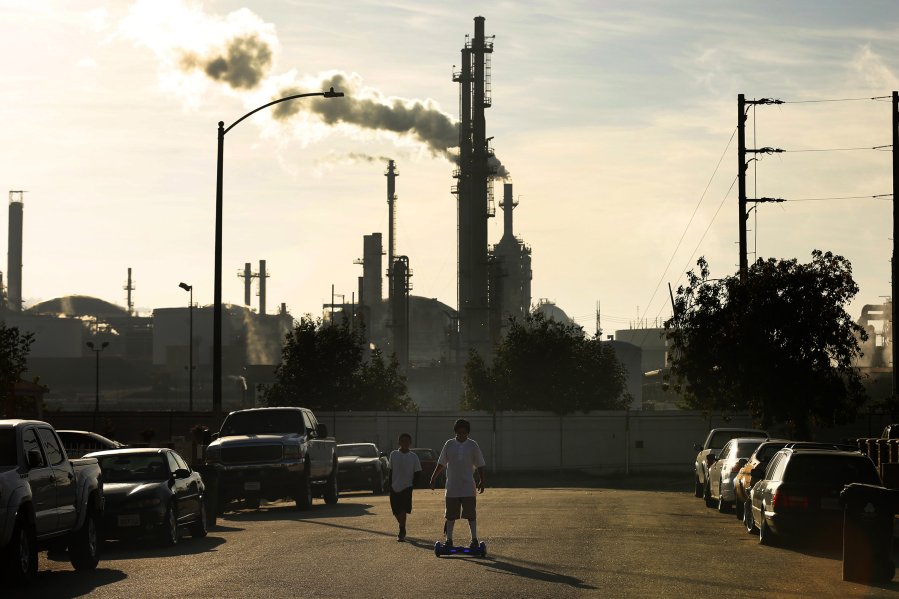SACRAMENTO, Calif. — California was clear about its ambitions when it enacted a law on global warming just over a decade ago. Progress on reducing greenhouse gas emissions, the law said, would have “far-reaching effects by encouraging other states, the federal government and other countries to act.”
Now the goal has become more critical than ever as President Donald Trump rolls back national environmental regulations. No matter how hard California pushes, the country will fall short of its obligations under the Paris agreement on climate change unless more states try to keep pace.
So far, experts say, not enough is being done. A dozen states are emulating California’s rules on tailpipe emissions, and even more are setting benchmarks for increasing renewable energy. But persuading them to adopt other, more ambitious policies, such as requiring polluters to pay fees through a cap-and-trade system, remains elusive despite years of efforts.
“I’m not giving up hope,” Gov. Jerry Brown said, “but it has been difficult.”
The gap in environmental policies between California and other states has quickly become a source of international concern. The United States must cut emissions by at least 26 percent below 2015 levels by 2025 to hit its target in the Paris agreement. If other countries such as India don’t see the world’s largest economy upholding its end of the deal, the entire framework for averting the worst effects of global warming could collapse. Last week, U.S. Environmental Protection Agency Administrator Scott Pruitt called for an “exit” to the climate agreement.
Hard target to meet
Meeting the Paris target was always going to be difficult — all of President Barack Obama’s policies combined would not have been enough to sufficiently cut emissions by the deadline, according to research from the Lawrence Berkeley National Laboratory. Trump is targeting regulations on power plants and vehicles, knocking the country further off the trajectory toward its international obligations.
The lack of pressure from the White House could have a ripple effect that makes states less likely to take politically difficult steps to cut emissions and reduce their reliance on fossil fuels. But Brown and environmental advocates are hoping for a political backlash against Trump that helps persuade local leaders to fill the void created at the federal level on climate change.
“I do believe that science and peer-reviewed research — and essentially the truth about the world — will ultimately prevail,” Brown said. “The only question is if it will be too late.”
California is responsible for less than 1 percent of the world’s greenhouse gas emissions, and Brown has pledged to keep looking for allies.
That effort has advanced in fits and starts ever since his predecessor, Gov. Arnold Schwarzenegger, signed Assembly Bill 32 in 2006. The law became the foundation for California’s cap-and-trade program, which requires companies to buy permits to release greenhouse gases into the atmosphere.
California and some of its neighbors launched the Western Climate Initiative to support similar policies in the region. But the recession made politicians wary of anything that could increase business costs, and then legislation for a national cap-and-trade program died in Congress. Meanwhile, Democrats lost campaigns in states including Arizona and New Mexico.
In 2013, California signed a new agreement with Oregon, Washington state and British Columbia to create a West Coast alliance. However, progress has been difficult, even in the otherwise liberal Pacific Northwest.
Oregon, which has one of the few statehouses completely controlled by Democrats, is debating a cap-and-trade program that could link with California, creating new avenues for reducing emissions. But the state’s budget problems may push climate change onto the back burner in the Legislature.
Other hurdles
There are other hurdles in Washington, where Republicans have often been able to block climate programs. Lawmakers are considering a tax on carbon emissions rather than requiring polluters to obtain permits through a cap-and-trade system, an idea that previously died in the state Legislature.
Domestic political obstacles mean it can be easier for California to find partners outside the country. The Canadian province of Quebec has joined California on cap and trade to collectively auction pollution permits, and Ontario is expected to take a similar step. China has worked with California to develop its own system, which is scheduled to launch this year.
Environmental advocates say changing the landscape will mean increasing their pressure in statehouses, which are mostly controlled by Republicans.
“The same political forces and money that are behind the retreat away from climate action in Washington are also present in states around the nation,” said Jeremy Symons, associate vice president for climate political affairs at the Environmental Defense Fund. “It’s going to take the inevitable public backlash that we expect, and are already starting to see, to turn things around.”
He referred to progress in some states led by Republicans, who see potential for new jobs and lower prices in renewable energy. Since Trump was elected, Illinois Gov. Bruce Rauner and Michigan Gov. Rick Snyder signed legislation to boost solar and wind power in their states. More recently, Ohio Gov. John Kasich vetoed a measure to eliminate similar policies that was pushed by members of his own party.
There are other areas where California is prepared to anchor the battle against climate change. It’s the only state in the country allowed to set rules on tailpipe pollution tougher than federal standards, and regulators are pushing emission reductions despite potential opposition from Trump.
The decision could affect nearly half of the country’s vehicle market, because a dozen states have adopted California’s policies as their own.



